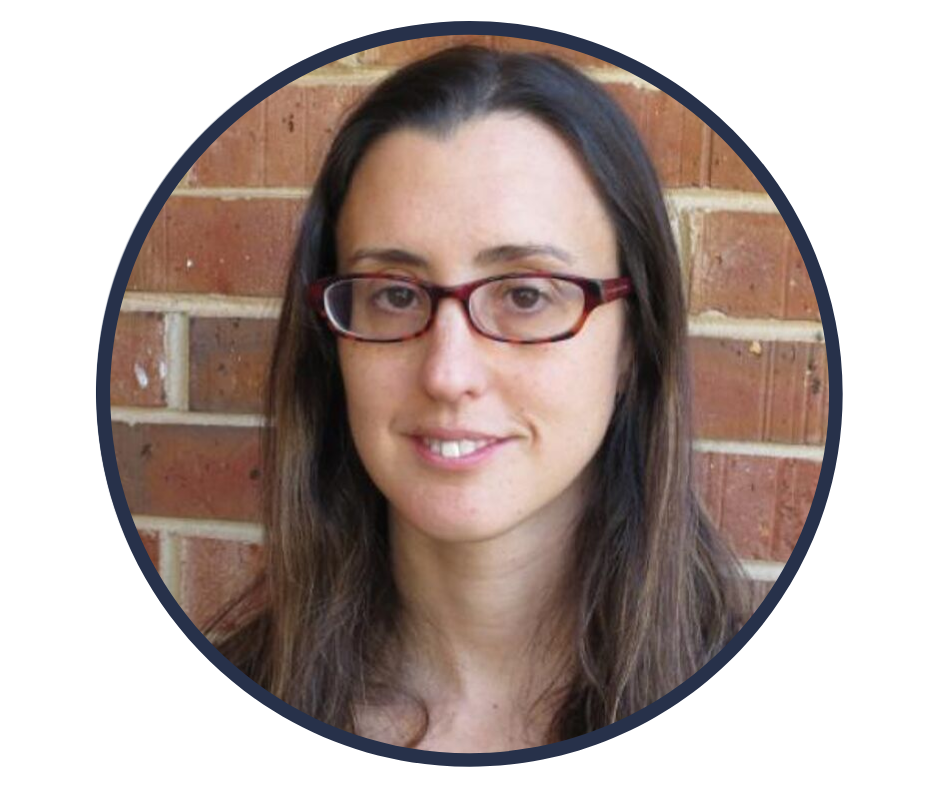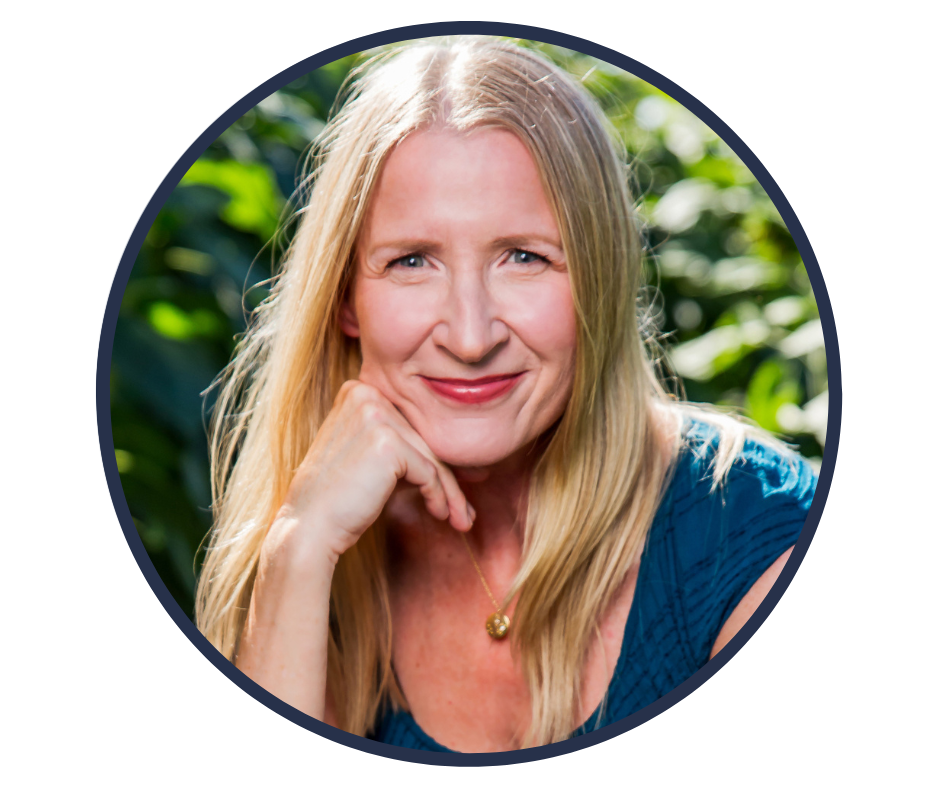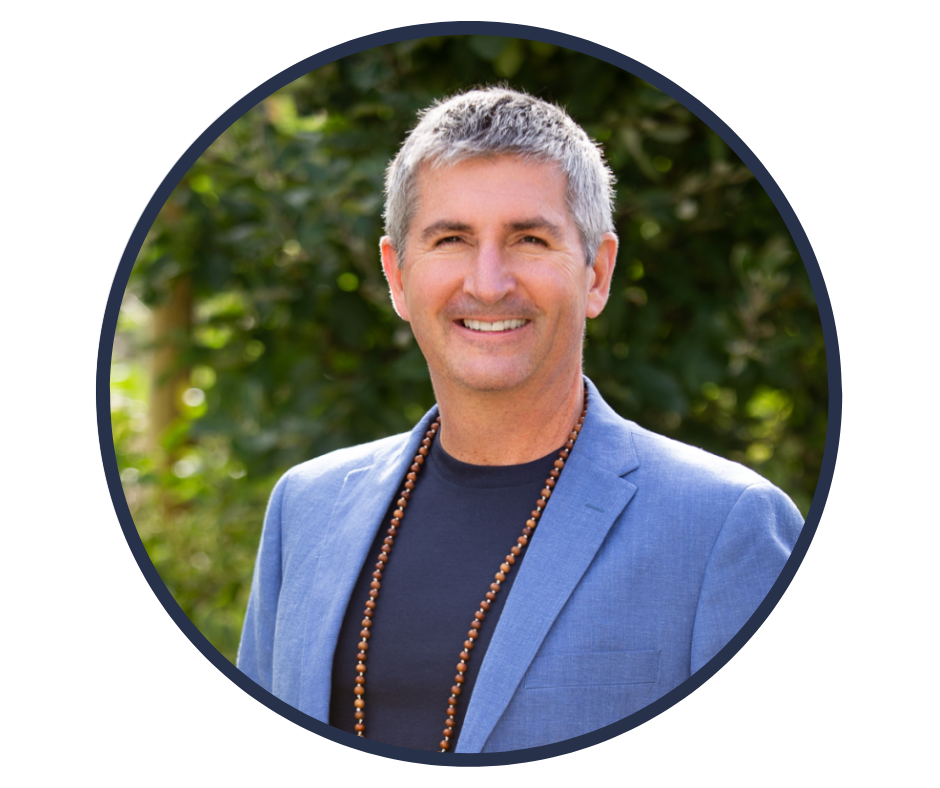Yoga and Science in Pain Care - Yoga as a Path to Living Well With Chronic Pain
By: Anna DiMarco (BMRPT) ∙ Estimated reading time: 7 minutes
By: Anna DiMarco (BMRPT) ∙ Estimated reading time: 7 minutes
This is the 15th and final post in a series based on the Yoga and Science in Pain Care Book Club, a 15-part course based on the book of the same title, by Neil Pearson, Shelly Prosko, and Marlysa Sullivan. You can find the blogs corresponding to Chapter 1, Chapter 2, Chapter 3, Chapter 4, Chapter 5, Chapter 6, Chapter 7, Chapter 8, Chapter 9, Chapter 10, Chapter 11, Chapter 12, Chapter 13. and Chapter 14.
Healers at my door
I recognized very early on in my career as a physiotherapist working in a private practice setting that those patients presenting with chronic pain were suffering in ways far beyond the physical nature of their discomfort. I was far too young and lacking in life experience to have the language to name the suffering or to even attempt to articulate what I was witnessing, but I sensed it deeply. It was a feeling that despite its dark mystery and its elusiveness insofar as a label goes, was vaguely familiar as profound grief due to loss.
Over time, after I had learned more about the complexity and the all-encompassing nature of chronic pain and in particular following my own life-disrupting medical crisis, I came to understand what these patients were experiencing - a great sense of loss that included their self-identity and a disconnection from their friends, families, colleagues and the world at large. This loss of an integrated internal and external identity can have profound implications and can lead to an existential crisis for some patients experiencing chronic pain or other life-changing health crises.
Although professional and personal experience gave me a label and a clearer understanding of the degree of suffering my patients might experience, I still did not have a clear path forward for these patients or myself, nor did I have the appropriate strategies and techniques to help navigate our way back to a healthy sense of self, life and worldly engagement. Conveniently, the universe delivered two beautiful “healers” to my door, both espousing the tremendous benefits of yoga and encouraging me to “just try it”. One healer arrived as an incredibly experienced yoga teacher “disguised” as a new patient. The other had been in my life in several incarnations, first as one of my favorite aerobics instructors, and later as a professional peer and good friend who happened to be a lifelong yogi. These two kind and wise women put me on my own path of rediscovery and healing…on the path home.
The topic and the framework for navigating the path “home” is well laid out in Chapter 15 of Yoga and Science in Pain, written by Marlysa Sullivan. The chapter titled Connection, Meaningful Relationship, and Purpose in Life: Social and Existential Concerns in Pain Care, beautifully reviews the social and existential concerns arising from living with chronic, persistent pain and the associated adverse health outcomes. Marlysa draws on her experience as a physical therapist, yoga therapist and professor at Maryland University of Integrative Health to weave together the neurophysiological science with the philosophical traditions of yoga. She then goes on to offer tremendous insights into how to apply the science and the philosophy, to create “an embodied experience into something different” for those who are suffering. You can listen to Marlysa dive passionately into her area of expertise by tuning in to the chapter course on Embodia here.
Click here to learn more about Chapter 15
of Yoga and Science in Pain Care
Disconnection is easy to recognize, not so easy to “fix”
When we become disconnected—from meaningful relationships, from ourselves, from our purpose in life—we can easily recognize that we are “lost” and in unfamiliar and uncomfortable territory. For those living with chronic pain, the loss of connection often extends beyond the self and one’s role or place in the world. It can include a diminished awareness of the body or a distancing and even possible rejection from the body or body part in pain. This loss of identity and connection to all that once was, often leads to a longing for the familiar past. Furthermore, the social isolation may contribute to a host of adverse health outcomes including but not limited to a lower level of physical function and greater disability in those with chronic pain, and a decreased adjustment to chronic pain.

Fig 1: Cycle of Relationships Between Loss of Connection, Isolation, Meaning and Purpose and Adverse Health Effects. From: Pearson N, Prosko S, Sullivan M. (2019). Yoga and Science in Pain Care: Treating the Person in Pain. London, UK: Singing Dragon Publishers; Figure 15.1, p.268.
Alternatively, feelings of connection, purpose, meaning and quality interpersonal relationships are beneficial to one’s health and wellbeing. These can compensate for the negative effects of the perceived social isolation that occurs with chronic pain, independent of other health comorbidities.
Knowing this, it is clear that a large part of working with people in pain is to help them reconnect - to their own bodies, to a healthy self-identity, to their social world and to the world at large. Some aspects of reconnecting require a re-evaluation of expectations, goals and possibly even beliefs surrounding one’s own purpose in life. How do we go about achieving this enormously daunting task in the face of ongoing pain and in the midst of a potential existential crisis? Where do we begin?
Rediscovering One’s Self: values as anchors and guideposts on the journey to wellness
Personal values can serve as incredibly powerful anchors and illuminating starting points…lanterns in the dark…as we commence this journey out of an existential crisis. Essentially, we are looking to help patients with chronic pain create a new lived experience for themselves, one that will provide a sense of connection, self-worth, agency and an integrated sense of internal and external identity. We are guiding them from existential crisis to eudaimonic wellbeing—the type of contentment that is achieved through self-actualization and having a meaningful purpose in one’s life (American Psychological Association). What better place to start than to re-evaluate what our values are and to re-align ourselves with them through our beliefs, behaviours and goals? After all, our personal values are an extension of ourselves and they are, in essence, our personal “measuring sticks” to determine our own success in creating a life with meaning.
Marlysa provides a beautiful experiential example on page 264 and also in the corresponding chapter session of the course series to help us find our way back to our values by exploring the excesses and deficiencies of different Yamas and Niyamas. From the two endpoints of excess and deficiency, we then find the “golden mean,” or the balanced expression of the ethical principle chosen.
Yoga and Science in Pain Care - Practice for finding the “Golden Mean” with Marlysa Sullivan
Living in alignment with our virtue ethics, or honoring the Yamas and Niyamas as we say in yoga philosophy, will help lead us out of suffering and onto the path of flourishing, even within our less-than-ideal life situations.

Fig 2: Addressing social and existential concerns through yoga teachings. From: Pearson N, Prosko S, Sullivan M. (2019). Yoga and Science in Pain Care: Treating the Person in Pain. London, UK: Singing Dragon Publishers; Figure 15.2, p.269.
Wellbeing: eudaimonic vs hedonic
Eudaimonic and hedonic wellbeing have been found to have significant but distinct health effects. Hedonic wellbeing refers to pleasure and satisfaction and is assessed through the measurement of subjective happiness, pleasure, satisfaction, feeling good, or positive affect. Eudaimonic wellbeing is understood as the subjective experiences of living a life of virtue and purpose, oriented towards “growth, authenticity, meaning and excellence” (Huta and Waterman, 2014). Eudaimonic wellbeing is measured through a tool that describes six scales: autonomy, environmental mastery, personal growth, positive relations with others, purpose in life, and self-acceptance. These scales are directly related to connection, meaningful relationships, and life purpose.
Spirituality and wellbeing
Spiritual wisdom contributes to wellbeing by promoting positive emotional states and meaningful social connections and relationships through the teachings of virtues and encouraging prosocial behaviors. Spirituality always includes a search for both meaning and purpose in life and a re-orienting of negative events into “meaning-making” opportunities for personal growth and transformation.
Furthermore, research has consistently demonstrated that spirituality can offer an improved quality of life experience for those suffering from chronic pain. Patients who report using spiritual coping strategies (prayer, spiritual community support, positive reappraisal of life circumstances etc.), tend to demonstrate improved pain tolerance, decreased levels of perceived pain, and increased functioning and participation in life activities. It serves us caregivers to be aware of our patients’ spiritual coping strategies so that we can integrate them into our care plan for a true mindbodyspirit journey to wellness.
Yoga therapy, spirituality and eudaimonia: the common denominators
Yoga therapy enacts a process that helps us to reconnect with meaning, equanimity, and contentment, regardless of the circumstances we find ourselves in. Ultimately, it guides us to use ethical inquiry and discrimination to help foster and embody a reorientation of one’s self-identity, meaning, and life purpose.

“Concepts such as dharma are essential to this process. Practices of asana, pranayama and meditation are provided within a context of supporting dharma and eudaimonic wellbeing. The relationship to the body, mind, and environment changes—even in the presence of pain, illness, or disability—such that suffering is alleviated and eudaimonic wellbeing is realized”(p. 270).

Fig 3: Explanatory Model for Yoga Therapy. From: Pearson N, Prosko S, Sullivan M. (2019). Yoga and Science in Pain Care: Treating the Person in Pain. London, UK: Singing Dragon Publishers; Figure 15.3, p.270.
The power of oneness
Yoga, via the teachings of yamas and niyamas, intentional action, mindful movement, breath, and meditation, enacts a process for achieving a state of awareness and unity that remains present beneath all shifting circumstances and phenomena of the mind, body, and environment.
Perhaps the greatest offering of yoga is this realization of “oneness” which is a much more expansive experience than that of “separateness”. From this more expansive sense of self, we may connect to, or cultivate a greater number of positive psychological and prosocial states such as joy, peace, patience, tolerance, kindness, respect, and compassion, and ultimately improve our social relationships and engagement with life.
We may still be experiencing chronic pain but we are actively learning to suffer less.
Some parting quotes

Click here to learn more about Chapter 15
of Yoga and Science in Pain Care
or
Click here to view the complete series
References:
Huta, V. and Waterman. A.S. (2014). Eudaimonia and Its Distinction from Hedonia: Developing a Classification and Terminology for Understanding Conceptual and Operational Definitions. J Happiness Stud, 15, 1425–1456. DOI 10.1007/s10902-013-9485-0
Pearson, N., Prosko, S., Sullivan, M. (2019) Yoga and Science in Pain Care: Treating the Person in Pain. London, UK: Singing Dragon Publishers.
Yoga and Science In Pain Care: Chapter 15 online course. Embodia.
---
Date published: 25 June 2024
Last update: 2 July 2024

BMRPT
Anna DiMarco (BMRPT) is a physiotherapist with a personal interest in living well beyond our physical limitations, injuries or illnesses. She has over 35 years experience working in private practice settings in Manitoba and her passion for helping others find their way back to “wellness”, however they choose to define it for themselves, has never been stronger. Anna is Pilates trained and Yoga Certified and loves to incorporate mindful movement, intentional stillness, meditation and guided visualization in her practice.
She enjoys writing and her quick thoughts on living life well can be found on Instagram and Facebook @annadimarcophysio.
She has not yet decided whether she will ever publish her twenty years of writing into a book (Wisdom from Behind the Curtain) or simply continue to write for the sheer pleasure and self-knowledge derived from reflecting on and writing about life as a human.

MPT, C-IAYT
Marlysa is a physiotherapist and yoga therapist with over 15 years of experience working with people suffering with chronic pain conditions. She is an Assistant Professor in Yoga Therapy and Integrative Health Sciences at Maryland University of Integrative Health and holds an adjunct position at Emory University, where she teaches the integration of yoga and mindfulness into physical therapy practice in the DPT program. She is also the author of Understanding Yoga Therapy: Applied Philosophy and Science for Well-being and co-editor of Yoga and Science in Pain Care: Treating the Person in Pain as well as several peer-reviewed articles.
Marlysa has been involved in the professionalization of the field of yoga therapy through the educational standards committee of IAYT, which helped to define the competencies for the field, and in characterizing the yoga therapy workforce through research. Her research interests focus on defining the framework and explanatory model for yoga therapy based on philosophical and neurophysiological perspectives.

PT, C-IAYT, PCAYT
Shelly has been helping people recover and flourish since 1998 as a physiotherapist, yoga therapist, educator, author and pioneer of PhysioYoga, blending evidence-informed body-mind-breath-spirit-heart centered practices and principles, such as yoga, into physiotherapy with a focus on chronic pain, pelvic health, compassion in healthcare and professional burnout. She is on faculty at several therapy programs, presents at medical conferences globally, contributes to academic research and writing, provides classes, courses and resources for the general population, and offers continuing education courses and mentorship for professionals.
She considers herself a lifelong student and emphasizes the immense value gained from clinical experience and learning from those she serves, the professionals she teaches, and the colleagues with which she collaborates.
Shelly is the co-editor/author of the book Yoga and Science in Pain Care: Treating the Person in Pain and has authored numerous book chapters in a variety of rehabilitation textbooks.
She maintains a clinical practice in Sylvan Lake, Alberta and believes compassion (including self-compassion), meaningful connections, spending time in nature and sharing joy are powerful contributors to rehab and well-being.
Visit www.PhysioYoga.ca to learn more.

PT, MSc(RHBS), BA-BPHE, C-IAYT, ERYT500
Neil is a physical therapist, yoga therapist, author, researcher, Clinical Associate Professor at the University of British Columbia, faculty in three IAYT-accredited yoga therapy programs, board member for the International Association of Yoga Therapists and pain care advocate. He conducts research into the effects of yoga on veterans with chronic pain and people with osteoarthritis. Neil is the recipient of awards honouring his work in pain care, patient education and physiotherapy by Queen’s University, the Canadian Pain Society and both provincial and national physiotherapy associations, including the Canadian 2021 Medal of Distinction.
Neil is a consultant to Partners in Canadian Veterans Rehabilitation Services, and to Lifemark’s 300+ clinics in Canada. Neil is a past board member for Pain BC, Canada’s premier non-profit transforming the way pain is understood and treated. He co-authored – Yoga and Science in Pain Care 2019, authored the patient education ebook, Understand Pain Live Well Again in 2008, and is lead contributor to many free patient resources offer by Pain BC.
For more information and course offerings, see www.paincareaware.com
